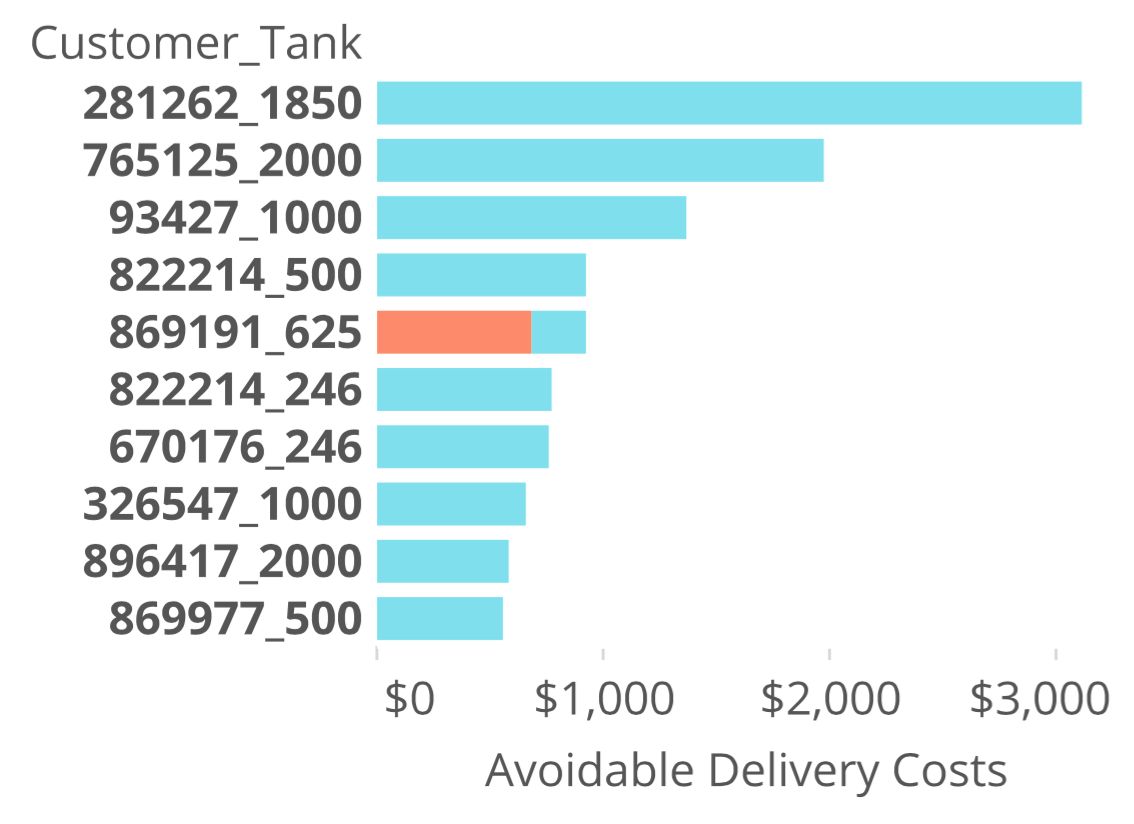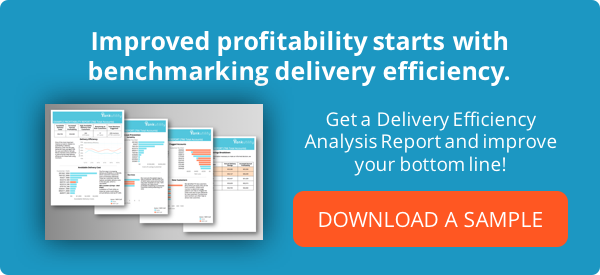This article is part of our series on fuel delivery efficiency. Generac offers every customer our detailed Delivery Efficiency Analysis Report using their delivery history data. The report helps fuel suppliers to benchmark their performance and find ways to improve efficiency and reduce costs.
Fuel Delivery Efficiency Series:
- Fuel Delivery Efficiency Analysis Overview
- Average Drop Size – Actual vs. Ideal
- Avoidable Delivery Costs
- Accounts Where Heating Degree Days Don’t Work
- Run-Out Review
- Red-Flag Accounts
- New Customer Check-Up
Avoidable Delivery Costs
Avoidable delivery costs are the result of over-delivering to customers. Whether or not you like the saying “under-promise and over-deliver” (or maybe you think its a tired cliche like us), literally over-delivering to your customer hurts your bottom line. Over-delivering is about making unneeded stops at a customer’s tank, usually because you’re afraid of running them out. Of course, no one wants to run a customer out of fuel, but stopping by too frequently and making unnecessary deliveries has a quantifiable and avoidable cost.
To find these avoidable delivery costs, we look individually account by account for exceptionally small drops (fills). If you can skip a small delivery or wait just a few extra days (or week) to make a bigger fill, then over the course of the year, you’ll make fewer total delivers to that customer. As always, you don’t want to run a customer out so it is a balancing act (a balance made easier with tank monitors) but may customers can go longer without a fills without worrying about running them out.
The chart below shows 10 customers with the highest avoidable delivery costs. In this example, we are assuming a per delivery cost of $50. A per delivery cost typically included the cost of a driver’s time, fuel, etc. Your costs may come to be higher or lower, but we have found that $50 is a good approximation for many fuel suppliers. Per customer avoidable delivery cost then is calculated as $50 x (number of drops historically – ideal number of drops).

Even with a number one goal of preventing run-outs, using tank monitors on only these ten tanks in the chart above could reduce annual delivery costs by $11,600. With a tank monitor, customers would still receive great service without that additional costs of making unnecessary deliveries.
 Shop
Shop

One thought on “Fuel Delivery Efficiency Analysis Series: Avoidable Delivery Costs”
Comments are closed.